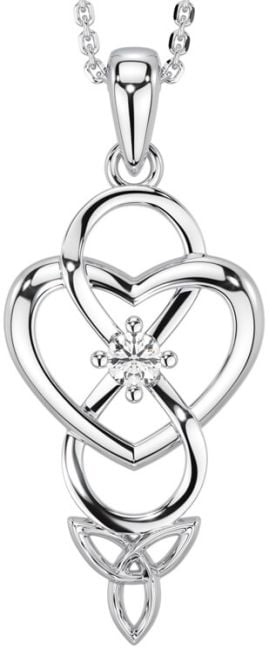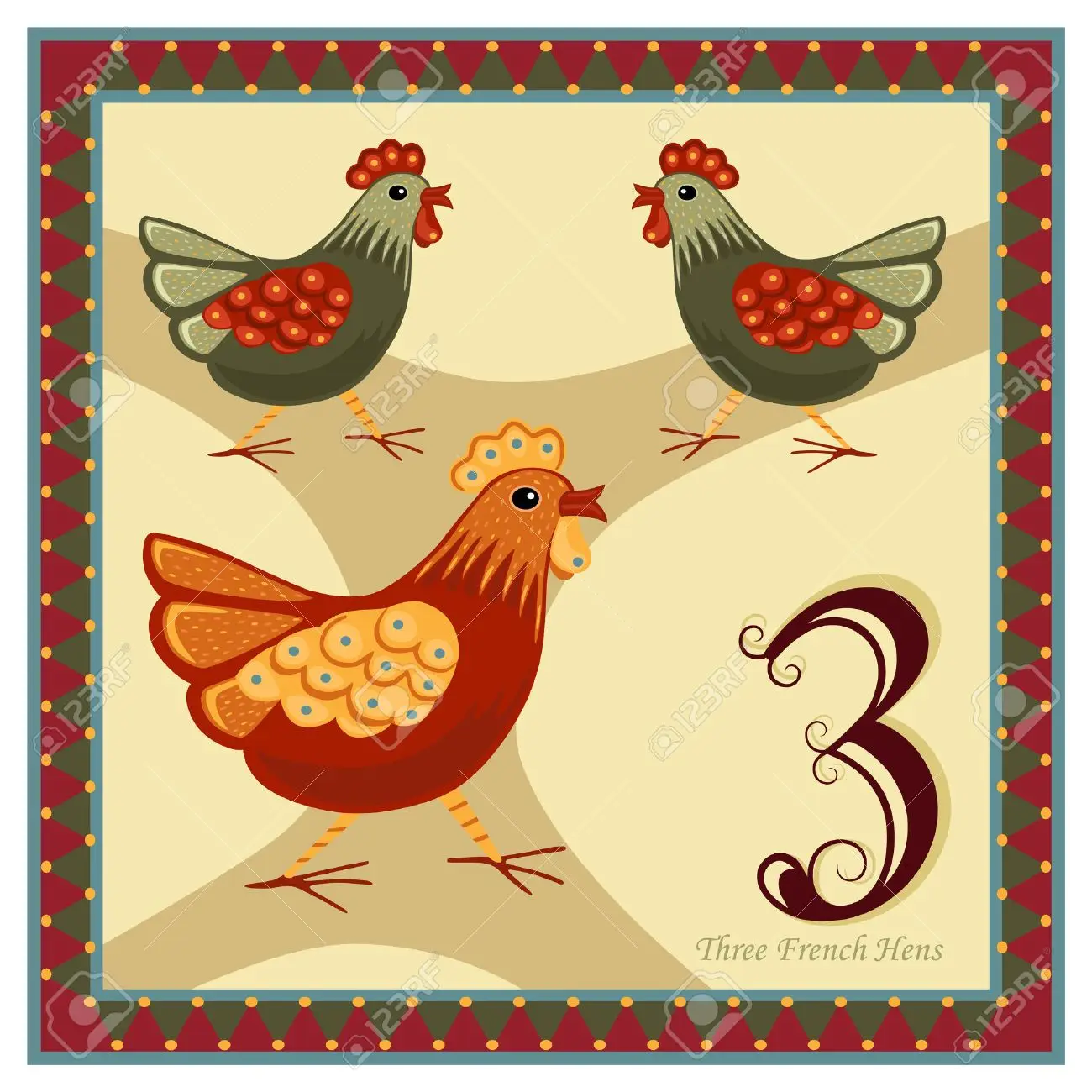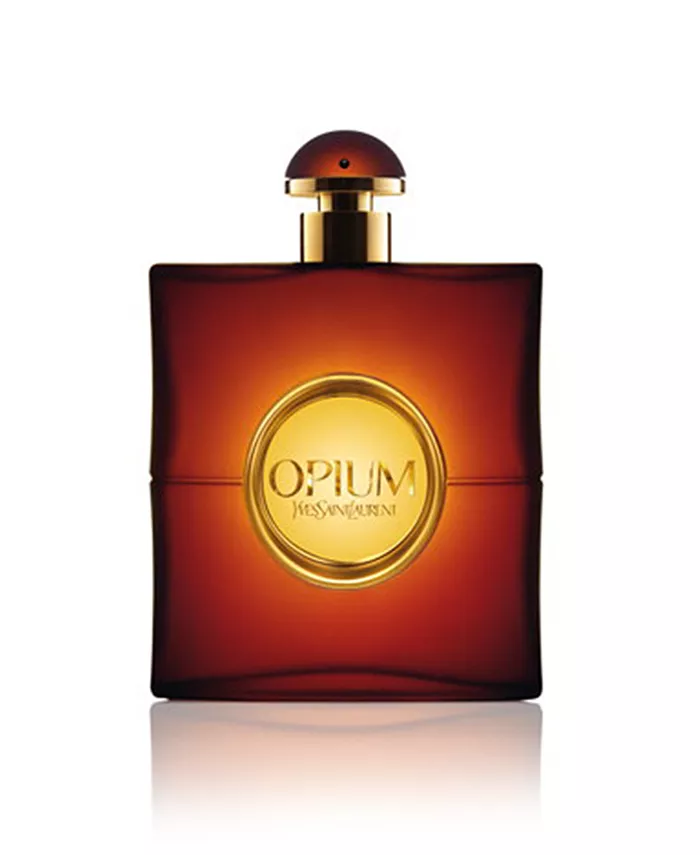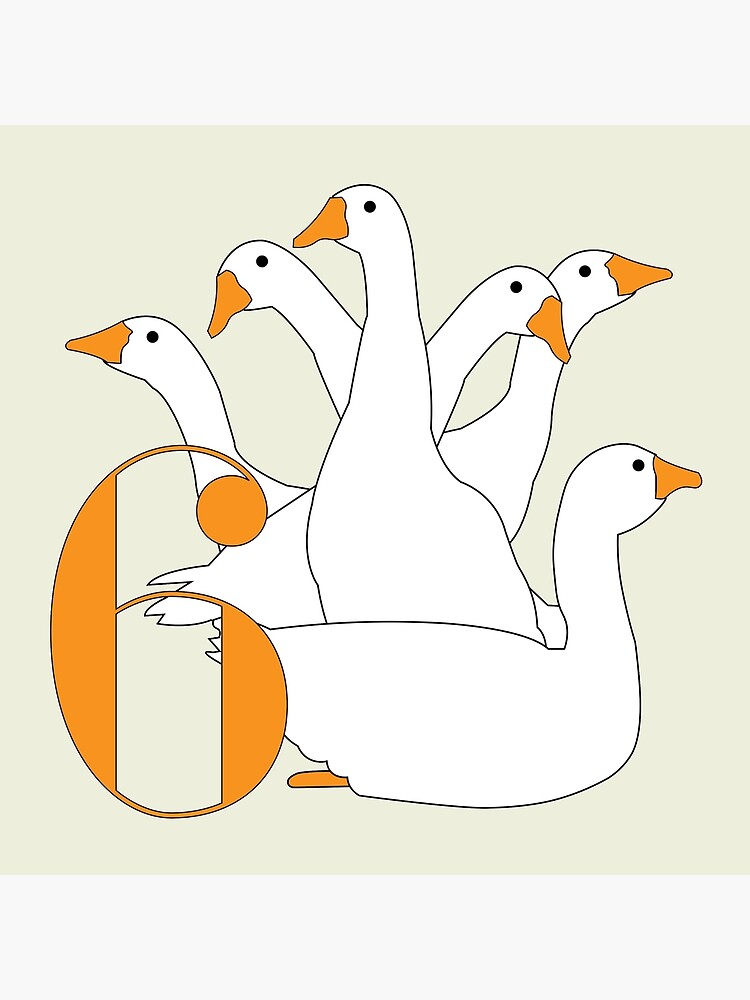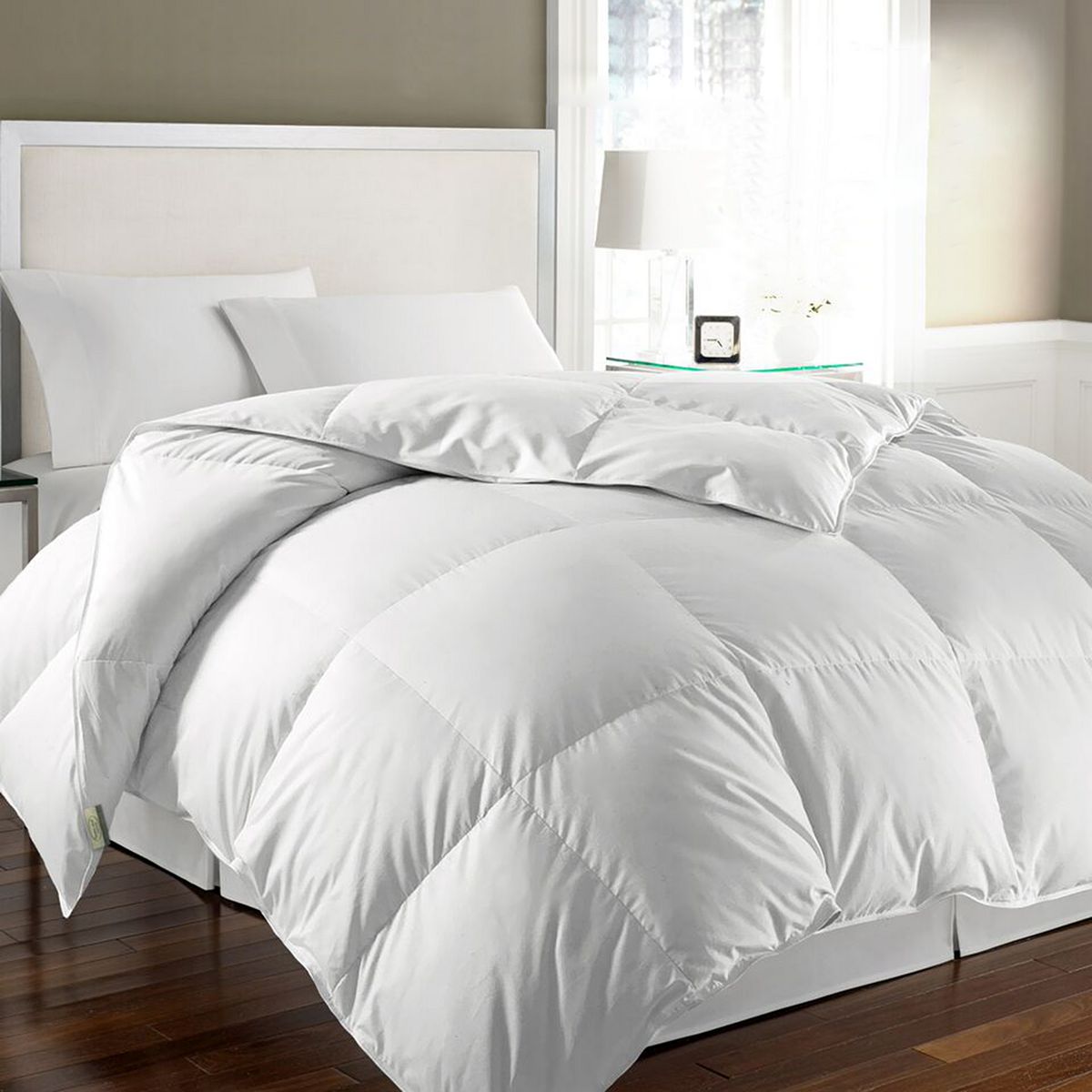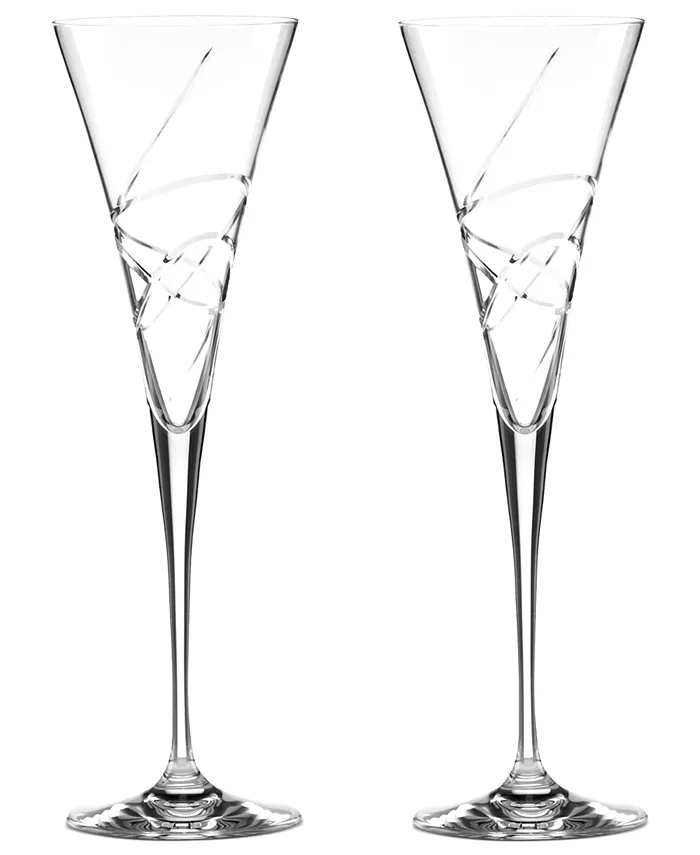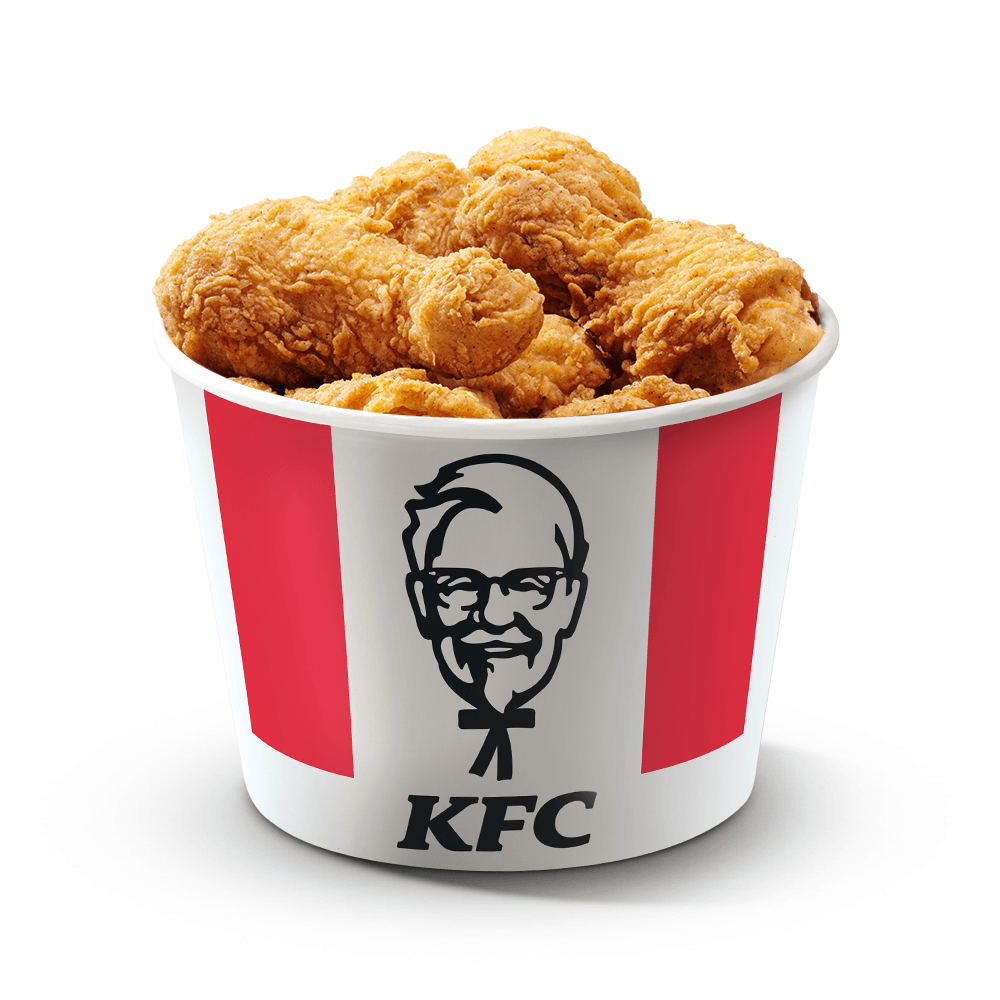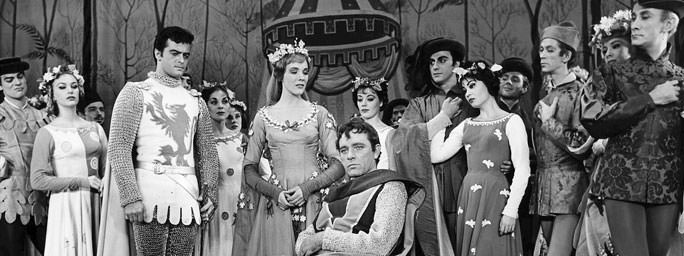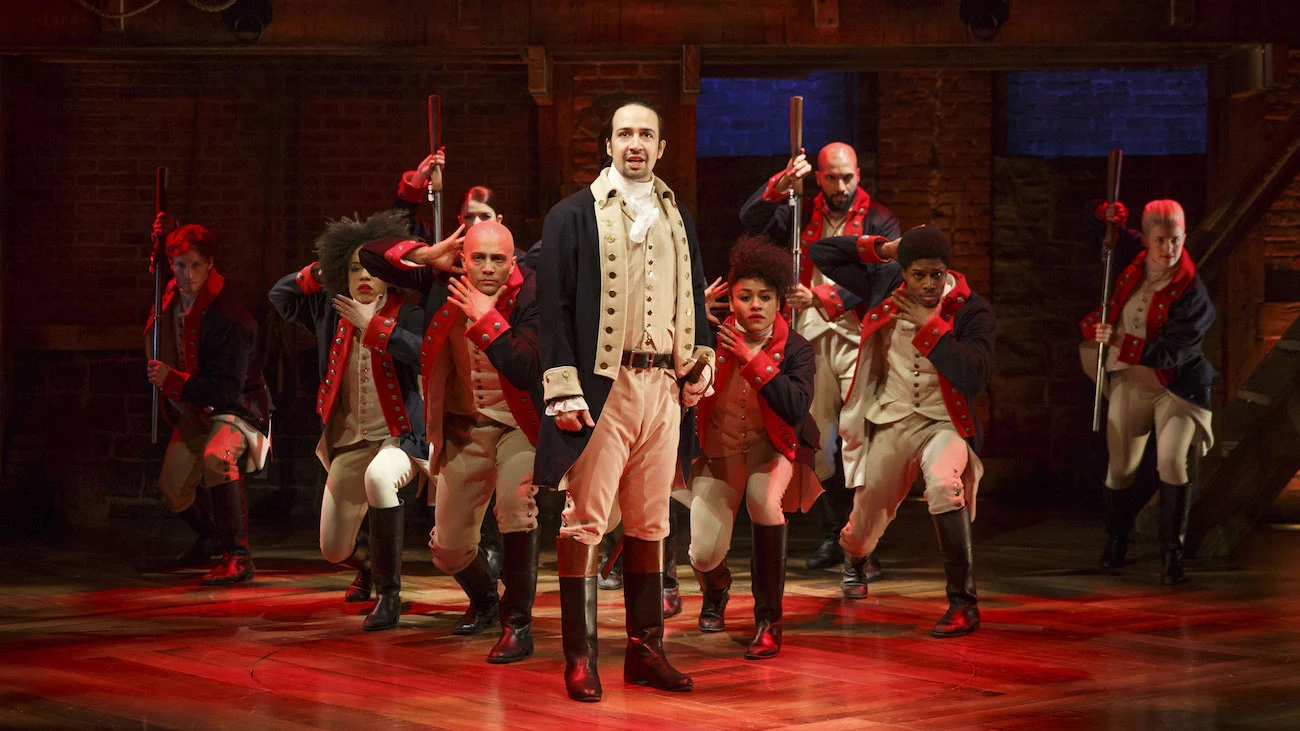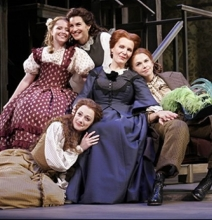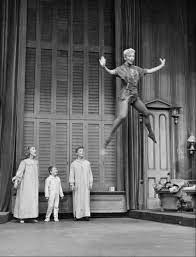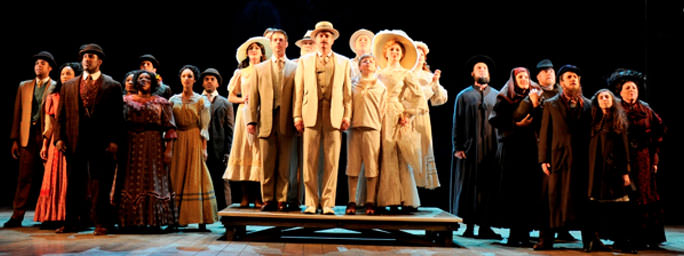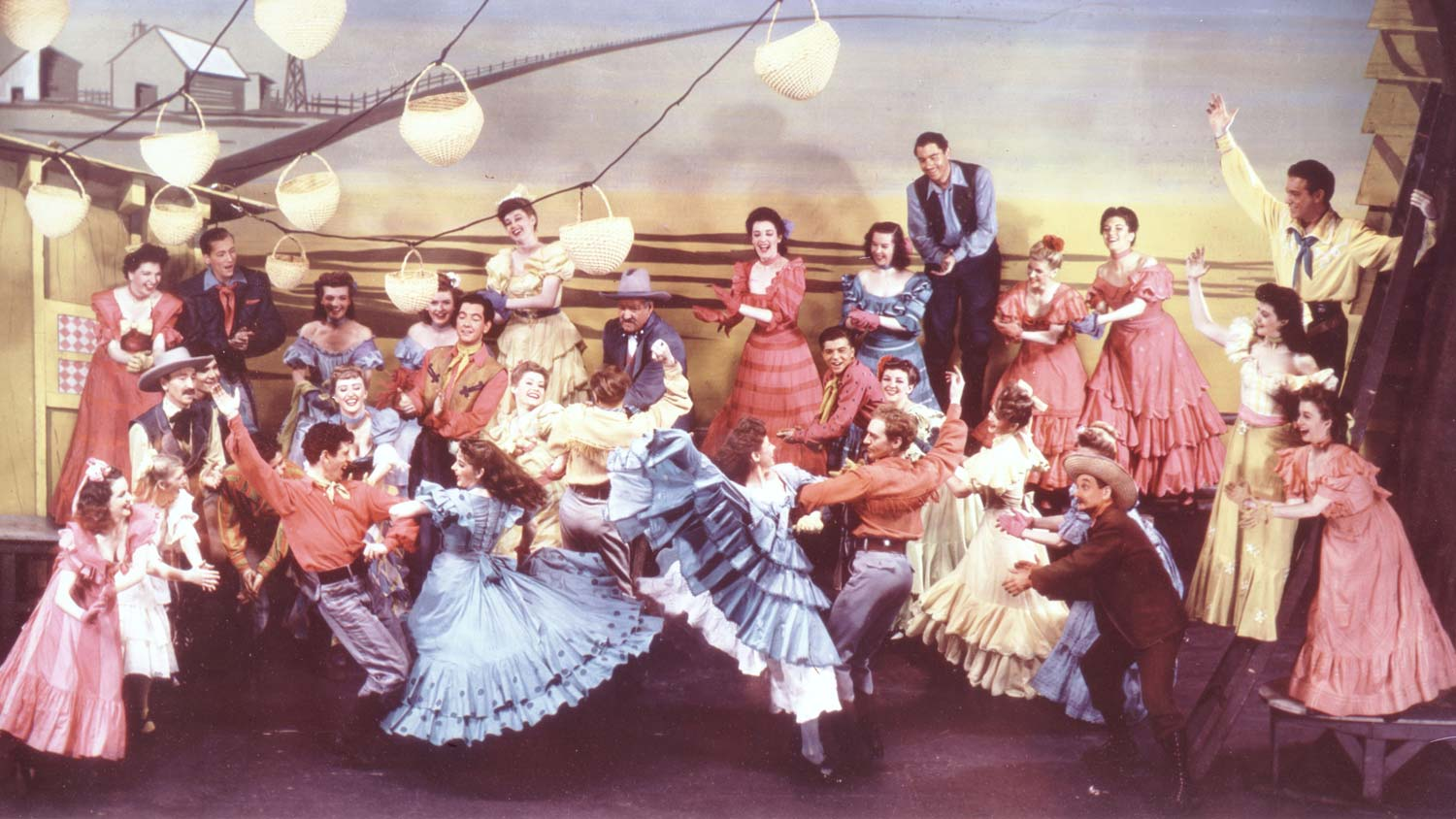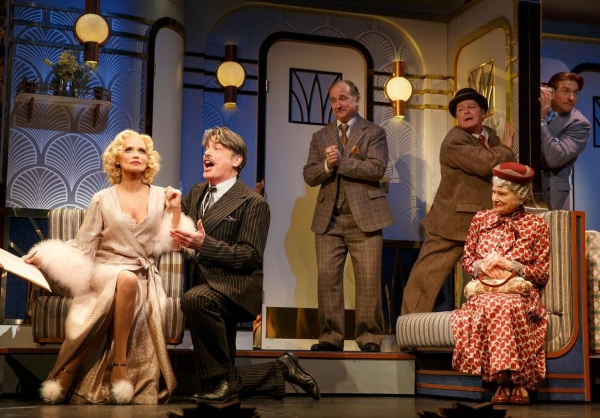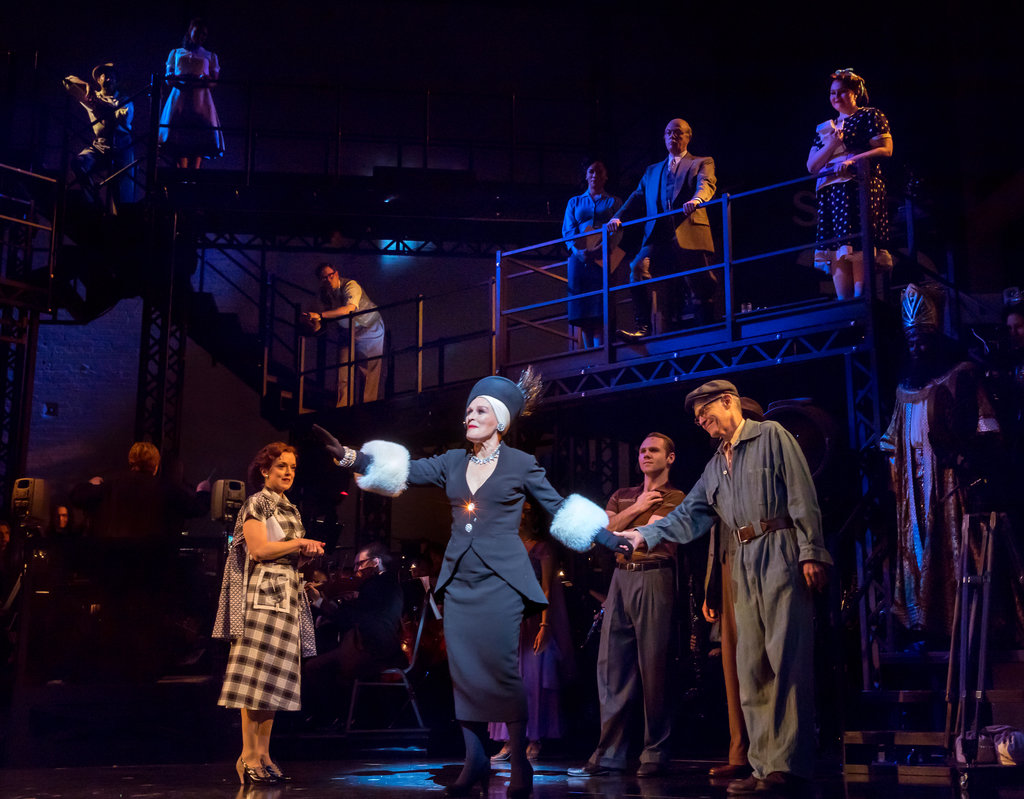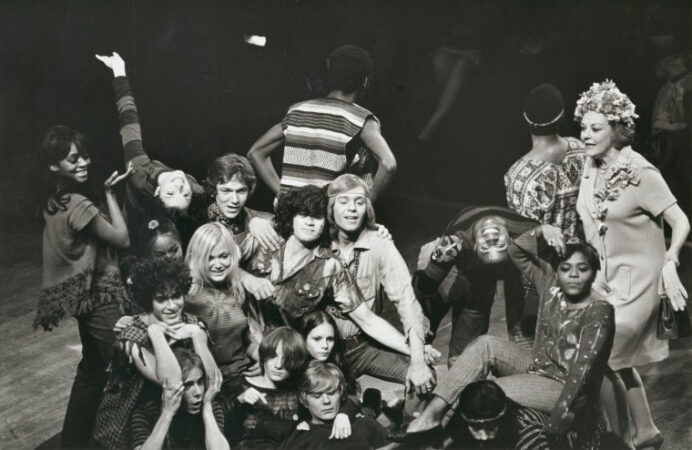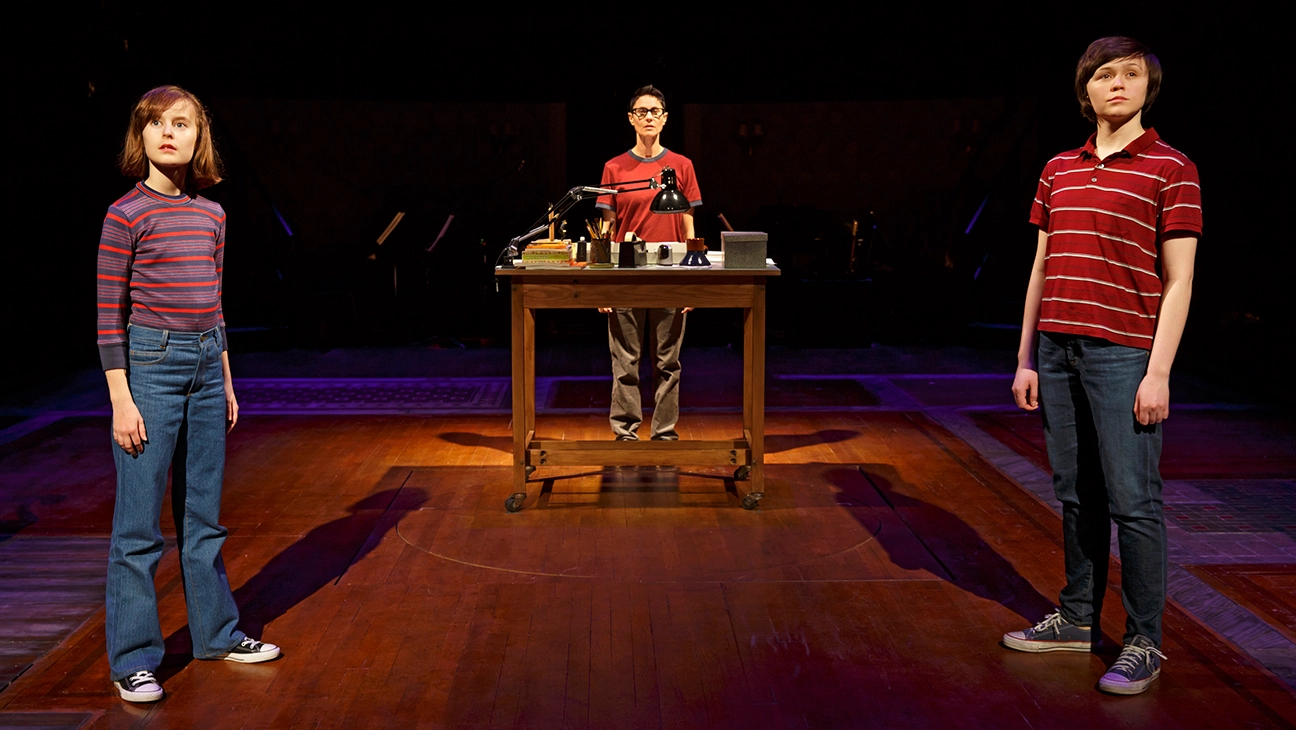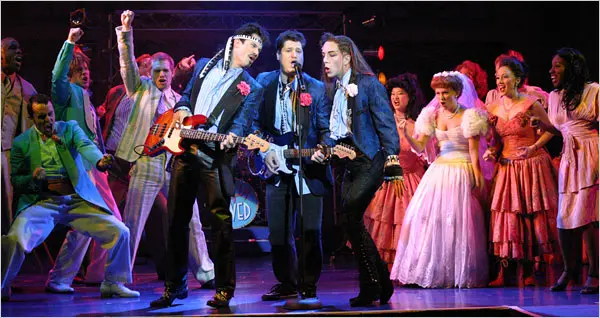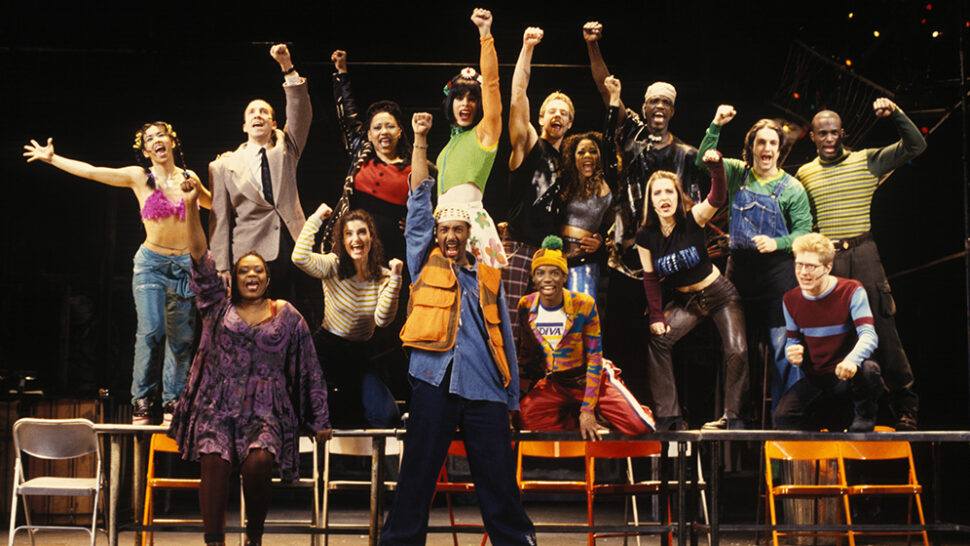As a theatrical costumer, I am often called on to determine (and visually create) the time period in which a particular musical is based. Some shows aren't set in a specific time period: Cinderella, Cats, and Into the Woods are good examples. Some shows are considered "contemporary" and can easily be placed in the current time period, regardless of when they (or their source material) were written: The Last Five Years, Matilda the Musical, and High School Musical can all be placed in current day settings. Some shows are tied to a historical event so the action must occur in a very specific - and sometimes very limited - time period: Titanic, Newsies, and Come From Away are examples of this type of show. Still others happen during a particular historical era or setting: Fiddler on the Roof, Hair, and Oliver! fall into this category. Finally, some an extended period of time, or skip from one period of time to another, such as Mame, Sunday in the Park with George, and Gypsy.
When you place a series of musicals into their proper settings, it creates a fascinating visual timeline. Here is my timeline of reasonably well-known musicals, along with their time periods, plus with some photos to walk your through time, Broadway-style.
Enjoy!
Where else to start but at the creation of the world, several million years BC. Children of Eden tells the story of the Biblical book of Genesis, beginning with the story of Adam and Eve. Generally, productions make no attempt at historical accuracy with costumes. (I wholeheartedly agree with this choice.)
The Elton John/Tim Rice musical Aida is set in the Old Kingdom of ancient Egypt, placing it roughly in the 2000s BC. Although costumes are highly stylized, there is generally a feeling of ancient Egyptian influences, particularly in the headpieces. The Andrew Lloyd Webber/Tim Rice musical Joseph and the Amazing Technicolor Dreamcoat is set in the same time period, and usually attempts something more of a period look, albeit with a decidedly contemporary spin at times (King Herod, I'm looking at you.)

The 1970s was a popular time for Bible-based musicals, with an off-Broadway hit in Godspell and a full-fledged Broadway hit in Jesus Christ Superstar. Although the source material of both is the life of Jesus in the 30s AD, the former is most often set in the 1970s (inspired, no doubt, by the movie starring Victor Garber as Jesus), while the latter is sometimes given a pseudo-Biblical look (as in the original Broadway production), but is also frequently placed in contemporary times, as is appropriate for its hard-rock score.
Another show that frequently mixes semi-historical looks (so many togas!) with more modern twists is
A Funny Thing Happened on the Way to the Forum, set in the Roman Empire during the reign of Nero, around the 50s AD.
Based on the legend of King Arthur,
Camelot is set in roughly the 400s, and is usually costumed with reasonable historical accuracy.
Pippin is based extremely loosely on the son of Charlemagne, who ruled in the 800s, and the costuming of most productions (including both the original Broadway production and the recent revival) can best be described as "fantastical with a slight historical flair."
A trio of musicals set in the 1500s, Six (1529) opts for couture inspired by historical fashions, while Something Rotten (1595) and Man of la Mancha (1597) both feature wonderfully historical looks.
Both set in the year 1776, 1776 goes strictly historic, while Hamilton (which goes through the year 1800) features an eclectic mix of historic looks and stylized, symbolic fantasies on the same.
Set only a few years later, in 1785, the dark musical
Sweeney Todd is often costumed in a more nebulous time period, especially as it is often mistakenly believed to be set during the Victorian era; however, the source material specifically places it in 1785. (Fortunately, it is not based on a true story.)
Natasha, Pierre, and the Great Comet of 1812 (set, not surprisingly, in 1812) and Les Miserables (covering the period from 1815-1832) have a similarly authentic look with plenty of brocade vests, brass buttons, and dark woolen layers.
A staple of schools and community theatres, the original Broadway production of
Oliver!, set amidst the slums and workhouses of 1830s London, featured corsets, aprons, grubby layers, and plenty of fingerless gloves.
Based on Mark Twain's "Adventures of Huckleberry Finn,"
Big River, set in the late 1840s, shows us lots of homespun shirts, woolen pants, and suspenders.
Set in 1850 in the Oregon Territory, Seven Brides for Seven Brothers is more well-known for its movie version than for the stage musical. The historical setting of the show serves mainly as an excuse for delightful prop choreography (using cross-cut saws and dancing on logs and roofs, for example), so it's not surprising that the costumes are geared more for dancing than for historical accuracy. The much lesser-known Paint Your Wagon is set in 1853 at the height of the California Gold Rush, and tends to feature lots of hats, vests, long underwear shirts, heavy work pants, and more suspenders.
Set in the early 1860s,
The King and I is nearly as well-known for its magnificent period costumes as for its magnificent score. Anna's voluminous gowns, as well as the King's richly decorated outfits, are all based on historical styles of the time, as worn by wealthy, upper-class (and royal) people. The musical
Shenandoah, set in the same time period, against the backdrop of the Civil War, shows much simpler fashions worn by ordinary, working people.
Little Women, also set during the Civil War, shows fashions worn by a once-comfortable family that has fallen on hard times.
Moving past the Civil War, three musicals set in the 1870s show an interesting contrast of fashions. Carousel, set in rural Maine, shows working-class clammers and fisherman, traveling carnies, and mill girls, while Annie Get Your Gun and The Will Rogers Follies show more "show" costumes than everyday wear, the former featuring lots of fringed leather and cowboy hats and boots in a Wild West show, and the latter showing spangled and feather showgirl costumes.
Moving ahead to the 1880s and moving across the pond to Europe, Phantom of the Opera (set in 1881), Sunday in the Park with George (starting in 1884), Jekyll and Hyde (set circa 1885), and Show Boat (starting in 1887) are all filled with corsetry, swagged skirts, and oversized hats for the ladies as well as lots of well-tailored tailcoats and top hats for the gents.

The decade from 1898 through 1908 is an abundant source of material for musicals. including Hello, Dolly! (1898), Newsies (1899), A Little Night Music and Gigi (1900), Peter Pan and Moulin Rouge! ("early 1900s"), Meet Me in St. Louis (1903), Finding Neverland (1904), Fiddler on the Roof (1905), Ragtime and Oklahoma (1906), and A Gentleman's Guide to Love and Murder and Anastasia (starting in 1907). We see fashions from New York, Paris, England, Sweden, Russia (from peasants to royalty), and the midwestern U.S. Depending on the setting, the colors are sometimes amped up and vividly bright (Hello, Dolly!, Moulin Rouge! and Oklahoma! - guess all those exclamation points should have been a clue) and sometimes toned down and drab (Newsies and Fiddler on the Roof).

The following decade, 1910-1919, was just as rich as the previous, giving us Mary Poppins and Rags (1910), The Music Man, Titanic, and My Fair Lady (1912), Parade (1913), and Funny Girl (starting in 1915). We see the England and Europe, we see rich and poor, we see performers and working people of all ilks.
The 1920s were yet another hot decade for shows - after all, who can resist a musical full of cloches, dropped waists, fringes, and furs? Either set generically "in the 1920s," like The Drowsy Chaperone, Lippa's The Wild Party, The Boy Friend, or Some Like It Hot, or anchored in a specific year, like Thoroughly Modern Millie (1922), Chicago (1924), Singin' in the Rain (1927), or Grand Hotel (1928), these shows show us the fashions of classy NYC, wild Chicago, and glamorous Hollywood.

The 1930s are the setting for plenty of shows that are simply "in the '30s," such as
Mame, Gypsy, Ain't Misbehavin', Crazy for You, Guys and Dolls, On the Twentieth Century, Victor/Victoria, and Side Show. Mame showed us party fashions; Gypsy, Ain't Misbehavin', Crazy For You, and Victor/Victoria showed us performance glamour and backstage simplicity, Guys and Dolls showed us gangster chic, On the Twentieth Century showed us a combination of Hollywood glamour and gangster chic, and Side Show showed us carnies on and off stage.
If you arrange the next group of shows chronologically, it gives you a delightful walk through the decade of 1930s fashions: Cabaret (1931), 42nd Street, Annie, and Steel Pier (1933), Bonnie & Clyde, Anything Goes, She Loves Me, and the start of Evita (1934), Wonderful Town (1935), and The Sound of Music (1938).

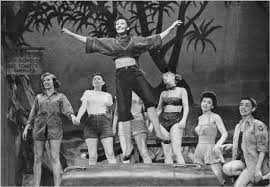


The musicals set in the early 1940s centered mainly around World War II: Allegiance (starting in 1941), South Pacific (1943), and On the Town and White Christmas (1944). Some were about soldiers at the front, some were about the families at home, and some were about the soldiers coming back home, but the war had an effect on everyone in these stories - and on the fashions they wore.
Musicals set immediately after the war in the late 1940s had a decidedly brighter, more upbeat outlook, and the costumes reflected that brightness quite literally. Shows like
An American in Paris, Bandstand, and
Bright Star (1945),
Kiss Me, Kate (1949), and
City of Angels (1940s) all popped vividly off the stage.
The early to mid 1950s showed a huge variety of styles: the elegance of European travel of
The Light in the Piazza, the clean-cut cool of
Jersey Boys, the street punk of Puerto Rican pride of
West Side Story (all set generically in "the 1950s); the faded glamour of
Sunset Boulevard (1950); and the working-class casual and clubbing looks of
The Pajama Game and the onstage glamour/off-stage casual looks of
My Favorite Year (1954).
The latter half of the 1950s brought yet more mixed styles:
Bells Are Ringing's clean-cut phone operators
and
Forever Plaid's clean-cut quartet (1956); a young Carole King in
Beautiful (starting her story in 1958); and the cooler-than-cool Pink Ladies and T-Birds from
Grease, glamorous performers and hilarious old ladies in
The Producers, and an overcoated detective in
Curtains (1959).
From fitted pencil skirts to super-full tulle underskirts to long spangled chiffon gowns, top the look with a beehive and you know you're in the 1960s. 1960s-era musicals include
Nine, Hairspray, Catch Me if You Can, Boeing Boeing, Hair, Little Shop of Horrors, Sweet Charity, and
Dreamgirls. Fashions evolved as we moved through the '60s, as shown by the sequence of
Bye Bye, Birdie (1960),
Caroline, or Change (1963),
A Man of No Importance (1964), and
Promises, Promises (1968).
The 70s were apparently not rich grounds for source material, although the mid-1970s gave us a few memorable musicals, including 1975's iconic
A Chorus Line and
Miss Saigon, 1976's
Fun Home, and 1977's
Sister Act. Just watch the fashion excesses of the 1980s go marching by: the neon Spandex of
Xanadu (1980), the oversized shoulderpads of
Chess ("1980s"), the polyester striped shirts of
Billy Elliot (1984), the giant ruffles and puffy sleeves of
The Wedding Singer (1985), the eclectic looks of
Rent (mid- to late '80s), the leopard-and-leather hair band chic of
Rock of Ages (1987), the bizarre goth styles of
Beetlejuice (1988), and the obnoxious plaid miniskirts, thigh-high socks, and tailored jackets of
Heathers (1989).
You know we've reached the 1990s when everyone's wearing plaid flannel shirts, usually tied around their waists.
Tick...Tick...BOOM! (1990) was more subtle about it;
MJ: The Musical (1992) covered it with sequins and fedoras;
Big (1995) totally embraced it;
Bat Boy (1997) spread it around; and
Mamma Mia! (1999) dropped it altogether in favor of the blues and greens of the Mediterranean Sea.
The first decade of the 2000s is already well-represented in the musical theatre world, by
Kinky Boots (early 2000s),
Come From Away (2001),
Legally Blonde (2007),
In the Heights (2008), and
The Prom (2010). Even the styles from 20 years ago still look nearly contemporary now in 2022.
I didn't find any musicals set between 2010 and the present, but I'm sure they'll be written before we know it. There is one that's set in 2027, however: U
rinetown. But we'll have to wait a few more years to find out whether we're all really going to suddenly start dressing like coal miners from the 1930s.







